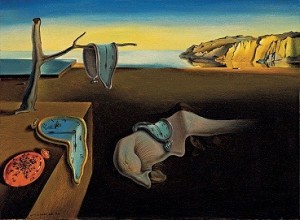 The Guardian reports on various theatres in England experimenting with pay-what-you-decide pricing – essentially passing the hat at the end of the show – as a means of attracting new audiences and ‘breaking down barriers.’
The Guardian reports on various theatres in England experimenting with pay-what-you-decide pricing – essentially passing the hat at the end of the show – as a means of attracting new audiences and ‘breaking down barriers.’
… the initiative is less about simply removing the financial barrier than removing the financial risk, which are two quite different things. After all, if people know that they want to see something, they will often find the money. It’s when they are uncertain about a show that they are less willing to take a risk …
Maybe. But here is the worry I have about such practices. The major cost of attending a show, with the exception of high-priced big-city shows, is the time involved. Even with a ticket price as high as $25, the time-cost of getting to the show, watching it, and getting home, will be more than the ticket price even for people who value their time at the minimum wage. And that time-cost is not pay-what-you-decide – when you make the effort to go to the show the time-cost is spent and sunk. As people often remark after seeing a disappointing performance, ‘there are three hours of my life I will never get back.’
So, how do you get new audiences out to see a performance? I think the last thing you want to suggest is (and I am exaggerating here, I know), ‘Come to our show, we know you might find it’s not your thing, but you are not obligated to pay money, so why not give it a try?’. For people to commit their time to attend a performance, they want to expect it to be worth it, something engaging and entertaining and thought-provoking. The presenter wants to show confidence in the show, telling people ‘truly, this is worth it. You have lots of ways to spend your time, but you really won’t want to miss this.’
Audiences need a signal that the presenter has confidence in the quality and appeal of the performance. And pricing is an important signal.

I see what you mean about the pay-what-you-think-it’s-worth scheme being essentially passing the hat, but I think there’s a big psychological difference..
I think that, for most people, passing the hat feels about the same as putting money in the collection plate at church or tossing change into a busker’s guitar case. It’s like low-level charity, or like doing someone a small favor.
By framing it as “pay us what you think would be your money’s worth”, it quits being charity and starts being a purchase – a business transaction. So the audience member/customer will feel some internal pressure or obligation to offer a fair price.
(Sure, some people will try to skate away paying nothing or very little, and they might even think themselves clever for doing it, but there are free riders in every endeavor.)
To me, this feels less like passing the hat than like a (very) low-tech version of the Barcelona comedy club that charges by the laugh: tiny seat-back cameras and facial-recognition software count how many times the person in a given seat laughs, and at the end each audience member gets a laugh count and a bill. Audiences evidently feel they’re paying a fair price, and the club reports that revenue has gone up.